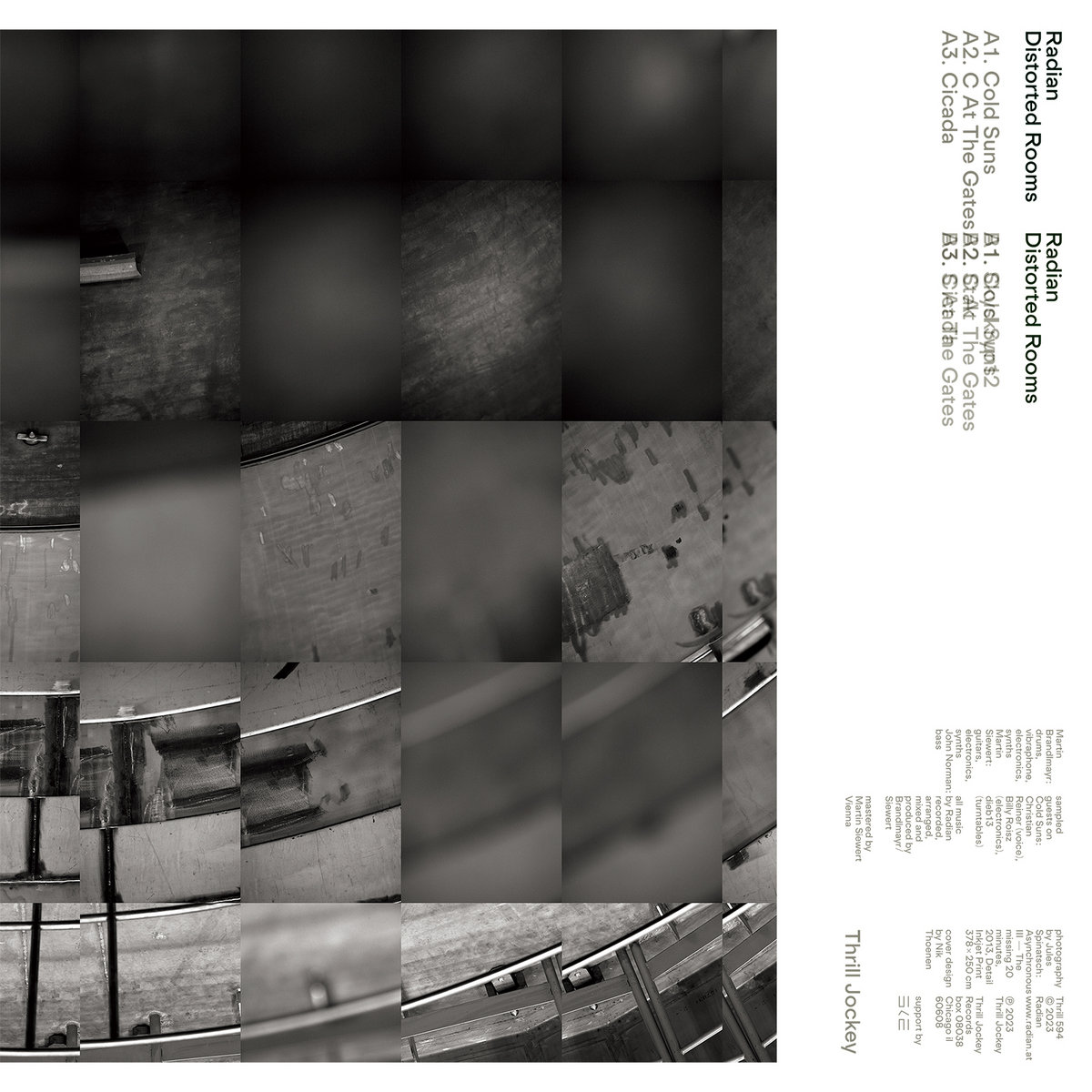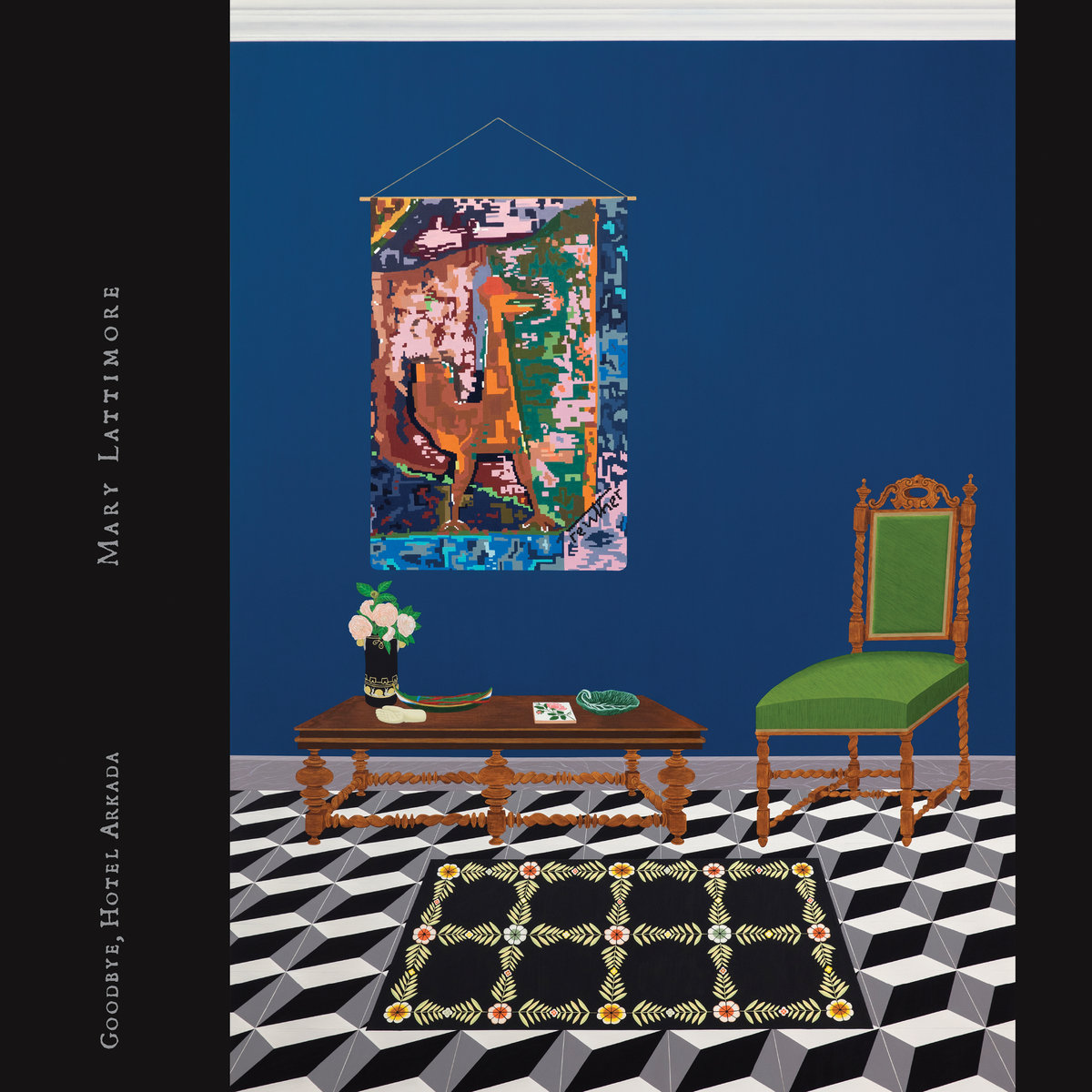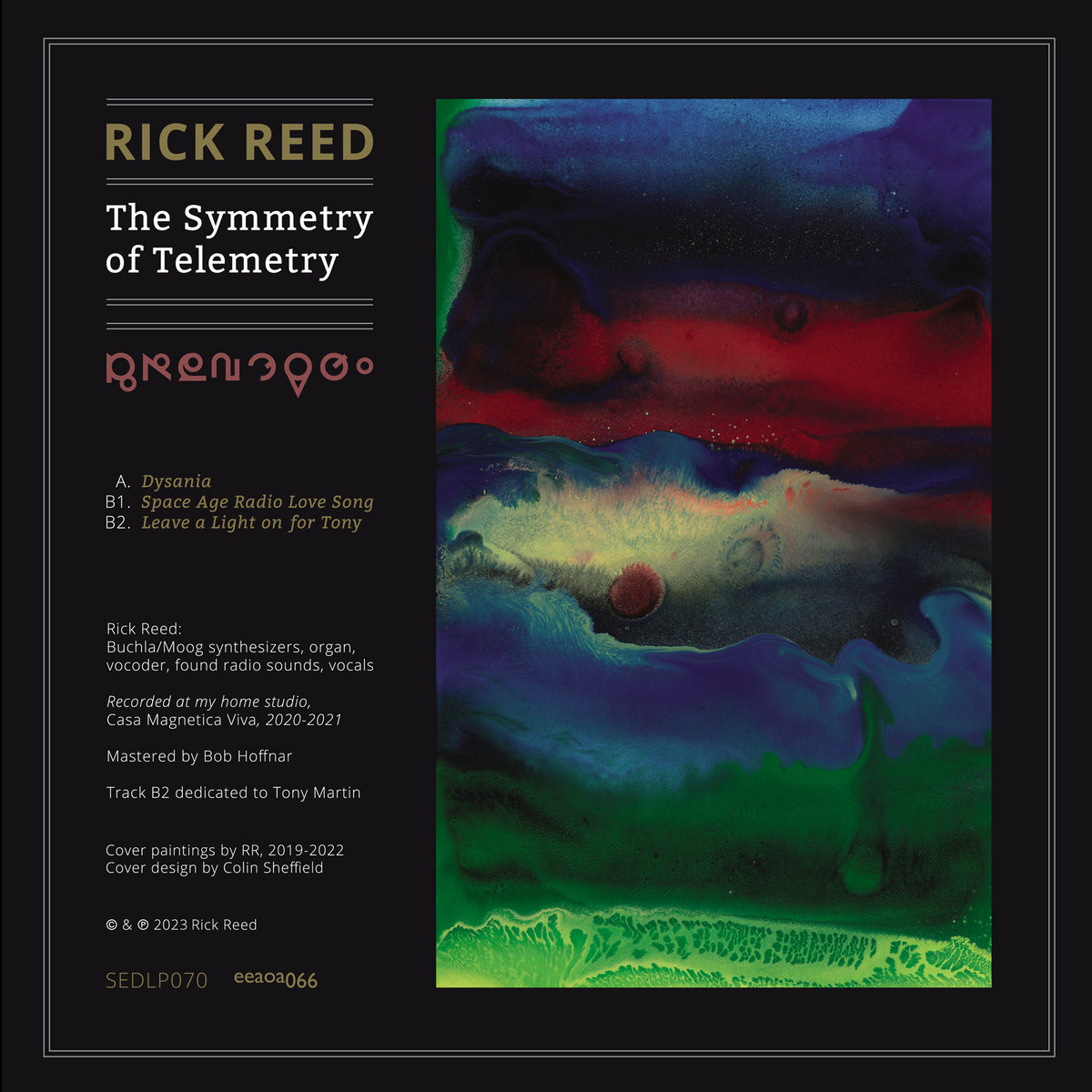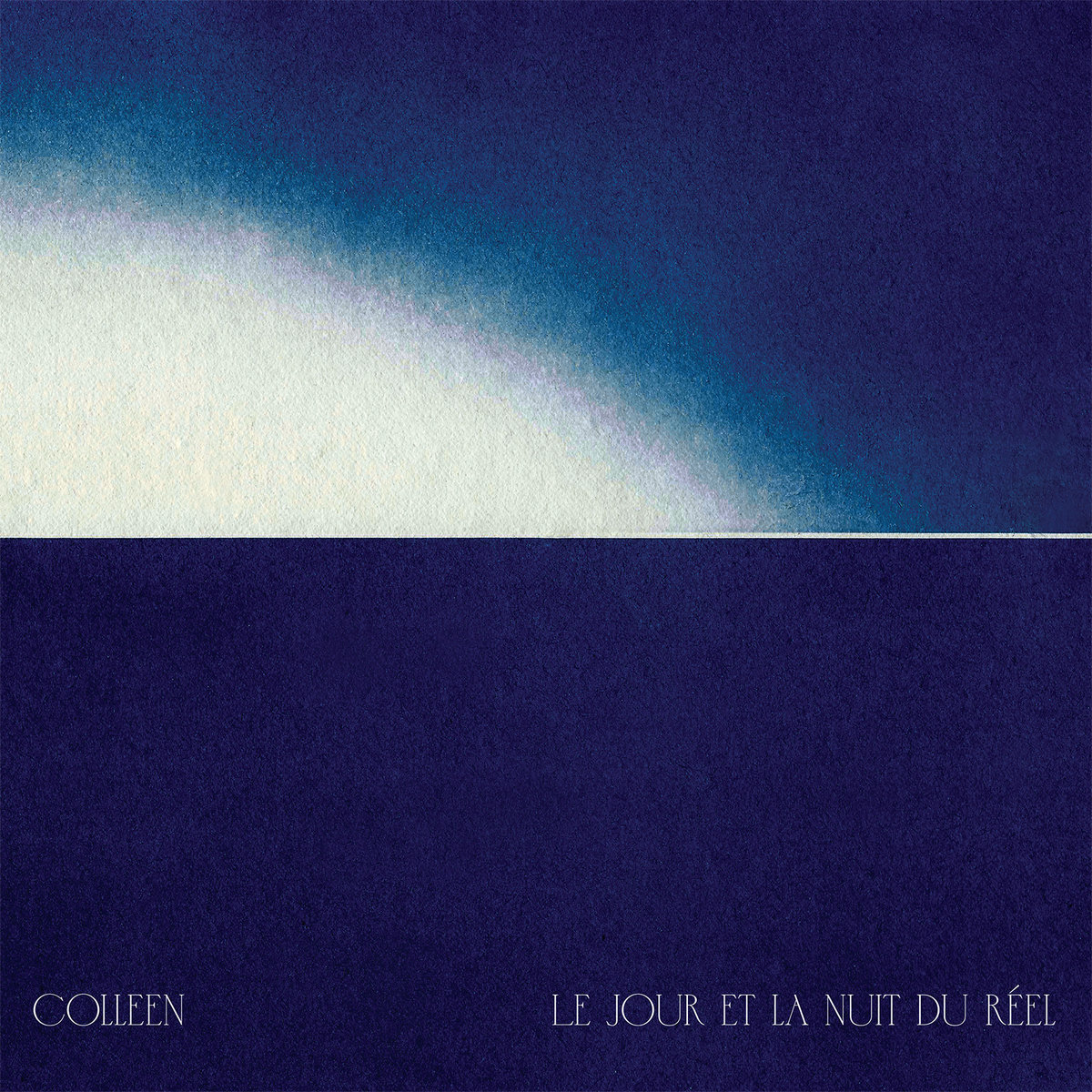 It has somehow been seven years since this long-running Vienna trio last surfaced with 2016's stellar On Dark Silent Off, but they seem to have spent that time diligently dreaming up innovative new ways to be amazing. In a general sense, Radian's vision is not a far cry from the austere, jazz-adjacent post-rock of their celebrated labelmates Tortoise. The magic of Radian, however, lies in the band's singular attention to detail and their quixotic compulsion to continually turn sounds upside-down in imaginative feats of dynamic sorcery. The overall effect is akin to that of dub techno being made by an incredibly tight live band, but the live aspect is quite illusory, as Distorted Rooms presumably sounds almost nothing like what the band originally recorded (in fact, the band themself note that one piece "eliminates nearly all traces of the original performance"). While many of the sounds do remain present in one form or another, Radian revels in celebrating and amplifying the barely audible and non-musical bits while also eliminating or burying the louder, more traditional "rock" tropes like chords and melodies. Obviously, The Dead C have made a fine career out of similarly deconstructing and inverting rock music, but Radian are the gleaming, precision-engineered opposite of Dead C's own shambling, spontaneous, and blown-out vision.
It has somehow been seven years since this long-running Vienna trio last surfaced with 2016's stellar On Dark Silent Off, but they seem to have spent that time diligently dreaming up innovative new ways to be amazing. In a general sense, Radian's vision is not a far cry from the austere, jazz-adjacent post-rock of their celebrated labelmates Tortoise. The magic of Radian, however, lies in the band's singular attention to detail and their quixotic compulsion to continually turn sounds upside-down in imaginative feats of dynamic sorcery. The overall effect is akin to that of dub techno being made by an incredibly tight live band, but the live aspect is quite illusory, as Distorted Rooms presumably sounds almost nothing like what the band originally recorded (in fact, the band themself note that one piece "eliminates nearly all traces of the original performance"). While many of the sounds do remain present in one form or another, Radian revels in celebrating and amplifying the barely audible and non-musical bits while also eliminating or burying the louder, more traditional "rock" tropes like chords and melodies. Obviously, The Dead C have made a fine career out of similarly deconstructing and inverting rock music, but Radian are the gleaming, precision-engineered opposite of Dead C's own shambling, spontaneous, and blown-out vision.
Thrill Jockey
The opening "Cold Suns" was also the album's first single, but it is unclear if it was chosen because the band believed it to be one of the most perfect distillations of their vision or if they merely thought it was one of the album's more immediately gratifying pieces. I suspect the reason may be the latter, as the album's second single "Skyskryp12" features a similar level of comparatively heightened drama. For the most part, however, "Cold Suns" offers a fairly representative first impression of Radian's current direction: gently stuttering loops, killer drumming, and a remarkably minimalist palette of guitar sounds. Unlike many other songs on the album, however, it eventually coheres into a brooding and tense chord progression, which lands the piece in somewhere near the post-punk revivalism of Moin (at least until the bottom drops out for a lengthy outro of distorted vocals, smoldering distortion, whimpering synth quivers, and broken, skeletal drums). "Skyskryp12" has a roughly similar aesthetic, but with one key difference: after it collapses upon itself, it kicks back into gear and builds towards a darkly cinematic crescendo. While both pieces are admittedly enjoyable and satisfying, however, the album's strongest pieces tend to be the ones with a bit of a lighter touch.
 I have not encountered Dan Colussi's work before this album, but the Turin-born artist is a bit of a lifer, as he has been steadily releasing music and touring for the last 20 years with various Canadian bands "of varying degrees of obscurity." His solo project, Fortunato Durutti Marinetti, first surfaced back in 2020 with the acclaimed Desire cassette. This latest release is his second for Soft Abuse (and his first for Quindi) and it is something of a bold creative leap forward, as returning collaborator/producer Sandro Perri has steered the project into a more synthpop direction with the addition of synths, drum machines, and other electronic touches.
I have not encountered Dan Colussi's work before this album, but the Turin-born artist is a bit of a lifer, as he has been steadily releasing music and touring for the last 20 years with various Canadian bands "of varying degrees of obscurity." His solo project, Fortunato Durutti Marinetti, first surfaced back in 2020 with the acclaimed Desire cassette. This latest release is his second for Soft Abuse (and his first for Quindi) and it is something of a bold creative leap forward, as returning collaborator/producer Sandro Perri has steered the project into a more synthpop direction with the addition of synths, drum machines, and other electronic touches. 

 An artist who always has something in progress or forthcoming, Mark Solotroff's has been most prolific under his own name as of late. Different from the frenetic, yet organized chaos of BLOODYMINDED, the doomy bombast of Anatomy of Habit, or the murky improvisations of The Fortieth Day (and those are only a few examples), his solo material in recent years has been more introspective and meditative, at times drifting into almost ambient territories. Following 2020's You May Be Holding Back and 2021's Not Everybody Make It, Today the Infinite, Tomorrow Zero continues his focus on using analog synths alone with a four track, but creating a depth and variance of sound that belies its rather Spartan origins. Compared to these recent albums though (and the Return to Oneself compilation of digital singles), the depth is even greater and further realized, and the sound has expanded to one that is almost musical, without ignoring any of the intensity expected from Solotroff.
An artist who always has something in progress or forthcoming, Mark Solotroff's has been most prolific under his own name as of late. Different from the frenetic, yet organized chaos of BLOODYMINDED, the doomy bombast of Anatomy of Habit, or the murky improvisations of The Fortieth Day (and those are only a few examples), his solo material in recent years has been more introspective and meditative, at times drifting into almost ambient territories. Following 2020's You May Be Holding Back and 2021's Not Everybody Make It, Today the Infinite, Tomorrow Zero continues his focus on using analog synths alone with a four track, but creating a depth and variance of sound that belies its rather Spartan origins. Compared to these recent albums though (and the Return to Oneself compilation of digital singles), the depth is even greater and further realized, and the sound has expanded to one that is almost musical, without ignoring any of the intensity expected from Solotroff. This latest full-length from NY-based composer/multi-instrumentalist Lea Bertucci features two longform Just Intonation commissions composed for small ensembles. Given that, it is no surprise that Of Shadow and Substance is a unique album within her discography, but the added participants and the non-standard tuning were not the only new elements, as Bertucci embraced a "textural approach to composition" as well.
This latest full-length from NY-based composer/multi-instrumentalist Lea Bertucci features two longform Just Intonation commissions composed for small ensembles. Given that, it is no surprise that Of Shadow and Substance is a unique album within her discography, but the added participants and the non-standard tuning were not the only new elements, as Bertucci embraced a "textural approach to composition" as well.  This six-song album borrows its title from a beloved Croatian hotel damningly slated for modernization, which is a fitting inspiration for an album that "celebrates and mourns the tragedy and beauty of the ephemeral." Obviously, that is an especially resonant theme these days, given the endlessly accelerating pace of change and the relentless erosion of the comforting and familiar. Lattimore has always been unusually well-attuned to such feelings, but Goodbye, Hotel Arkada is also inspired by her passions for collaboration and travel, both of which "shake loose strands of inspiration."
This six-song album borrows its title from a beloved Croatian hotel damningly slated for modernization, which is a fitting inspiration for an album that "celebrates and mourns the tragedy and beauty of the ephemeral." Obviously, that is an especially resonant theme these days, given the endlessly accelerating pace of change and the relentless erosion of the comforting and familiar. Lattimore has always been unusually well-attuned to such feelings, but Goodbye, Hotel Arkada is also inspired by her passions for collaboration and travel, both of which "shake loose strands of inspiration." Out of print soon after its initial release in 1995 and on vinyl for the first time, the second collaboration between Justin Broadrick (Godflesh) and Kevin Martin (The Bug) has always been considered a high point in their lengthy collaborative discography. A sprawling two-and-a-half-hour masterwork of heavy beats and rich ambience, it is just as captivating today as it was nearly 30 years ago. Reissued and repackaged with care from all involved, it is a masterpiece that is deserving of the attention it is receiving.
Out of print soon after its initial release in 1995 and on vinyl for the first time, the second collaboration between Justin Broadrick (Godflesh) and Kevin Martin (The Bug) has always been considered a high point in their lengthy collaborative discography. A sprawling two-and-a-half-hour masterwork of heavy beats and rich ambience, it is just as captivating today as it was nearly 30 years ago. Reissued and repackaged with care from all involved, it is a masterpiece that is deserving of the attention it is receiving. This is not my first exposure to Nathan Nelson's freewheeling Twin-Cities improv collective, but it may as well have been, as the droning kosmische psychedelia of last year's Embrace You Millions provided no hint at all of the dramatic stylistic reinvention looming on the horizon. To my ears, the band's entertaining new direction is best described as "James Chance fronts the B-52s," but the album's description goes even further and promises both "a spiritually-charged journey" and "a shit-kicking party record." The fact that Presents emphatically delivers on the latter claim is quite an impressive feat indeed, as the number of shit-kicking party records successfully recorded by shapeshifting collectives of synth and space rock enthusiasts tends to historically be quite low. To their everlasting credit, American Cream Band buck that trend quite decisively, as Nelson seems literally evangelical in his desire to make a fun and raucous party album and he assembled one hell of a killer band to bring that dream to life.
This is not my first exposure to Nathan Nelson's freewheeling Twin-Cities improv collective, but it may as well have been, as the droning kosmische psychedelia of last year's Embrace You Millions provided no hint at all of the dramatic stylistic reinvention looming on the horizon. To my ears, the band's entertaining new direction is best described as "James Chance fronts the B-52s," but the album's description goes even further and promises both "a spiritually-charged journey" and "a shit-kicking party record." The fact that Presents emphatically delivers on the latter claim is quite an impressive feat indeed, as the number of shit-kicking party records successfully recorded by shapeshifting collectives of synth and space rock enthusiasts tends to historically be quite low. To their everlasting credit, American Cream Band buck that trend quite decisively, as Nelson seems literally evangelical in his desire to make a fun and raucous party album and he assembled one hell of a killer band to bring that dream to life. As evident from many of my reviews at the time, I was (and remain) a big fan of the noise to EBM pipeline of genre overlap that was popular a few years back. Representing my two most momentous musical preferences during high school, hearing the two alongside each other was a perfect paring. Choke Chain, the solo project of Milwaukee's Mark Trueman is keeping this tradition alive, with a new album that leans more towards the rhythmic, rather than harsh end of this spectrum. Synth heavy, yet with aggressive vocals and production, it makes for an appropriate, fully realized album.
As evident from many of my reviews at the time, I was (and remain) a big fan of the noise to EBM pipeline of genre overlap that was popular a few years back. Representing my two most momentous musical preferences during high school, hearing the two alongside each other was a perfect paring. Choke Chain, the solo project of Milwaukee's Mark Trueman is keeping this tradition alive, with a new album that leans more towards the rhythmic, rather than harsh end of this spectrum. Synth heavy, yet with aggressive vocals and production, it makes for an appropriate, fully realized album. Austin's Rick Reed has been an active composer and performer of electronic music for over 30 years, but The Symmetry of Telemetry represents his first release since 2018. Using synthesizers, organs, vocoders, and found radio noises, Reed's compositional approach of developing smaller, disparate segments that are then later strung together in a collage is perfect for this material, juxtaposing different sounds and moods across the album's three lengthy compositions in a way that is dynamic, yet still coherent and cohesive as a whole.
Austin's Rick Reed has been an active composer and performer of electronic music for over 30 years, but The Symmetry of Telemetry represents his first release since 2018. Using synthesizers, organs, vocoders, and found radio noises, Reed's compositional approach of developing smaller, disparate segments that are then later strung together in a collage is perfect for this material, juxtaposing different sounds and moods across the album's three lengthy compositions in a way that is dynamic, yet still coherent and cohesive as a whole. It has somehow been seven years since this long-running Vienna trio last surfaced with 2016's stellar On Dark Silent Off, but they seem to have spent that time diligently dreaming up innovative new ways to be amazing. In a general sense, Radian's vision is not a far cry from the austere, jazz-adjacent post-rock of their celebrated labelmates Tortoise. The magic of Radian, however, lies in the band's singular attention to detail and their quixotic compulsion to continually turn sounds upside-down in imaginative feats of dynamic sorcery. The overall effect is akin to that of dub techno being made by an incredibly tight live band, but the live aspect is quite illusory, as Distorted Rooms presumably sounds almost nothing like what the band originally recorded (in fact, the band themself note that one piece "eliminates nearly all traces of the original performance"). While many of the sounds do remain present in one form or another, Radian revels in celebrating and amplifying the barely audible and non-musical bits while also eliminating or burying the louder, more traditional "rock" tropes like chords and melodies. Obviously, The Dead C have made a fine career out of similarly deconstructing and inverting rock music, but Radian are the gleaming, precision-engineered opposite of Dead C's own shambling, spontaneous, and blown-out vision.
It has somehow been seven years since this long-running Vienna trio last surfaced with 2016's stellar On Dark Silent Off, but they seem to have spent that time diligently dreaming up innovative new ways to be amazing. In a general sense, Radian's vision is not a far cry from the austere, jazz-adjacent post-rock of their celebrated labelmates Tortoise. The magic of Radian, however, lies in the band's singular attention to detail and their quixotic compulsion to continually turn sounds upside-down in imaginative feats of dynamic sorcery. The overall effect is akin to that of dub techno being made by an incredibly tight live band, but the live aspect is quite illusory, as Distorted Rooms presumably sounds almost nothing like what the band originally recorded (in fact, the band themself note that one piece "eliminates nearly all traces of the original performance"). While many of the sounds do remain present in one form or another, Radian revels in celebrating and amplifying the barely audible and non-musical bits while also eliminating or burying the louder, more traditional "rock" tropes like chords and melodies. Obviously, The Dead C have made a fine career out of similarly deconstructing and inverting rock music, but Radian are the gleaming, precision-engineered opposite of Dead C's own shambling, spontaneous, and blown-out vision. As someone who has loved Cécile Schott's work since 2003's Everyone Alive Wants Answers, I have long been fascinated by the various twists and turns that her vision has undergone over the years. While there have certainly been stretches in which she has lingered upon a vision for more than one album, Schott's creative restlessness invariably steers her into adventurous and unfamiliar territory eventually. As a result, Colleen's small discography is divided into an impressive number of distinct phases (the sample-driven collage era, the viola da gamba years, the synthesizer years, etc.). In a general sense, this latest full-length (her ninth) is a continuation her recent synthesizer phase, but it is also a significant break from her previous work in that vein: Le jour et la nuit du réel is seven-suite double album of minimalist vignettes exploring how a motif can be significantly transformed through the manipulation of synthesizer settings alone. Given the fundamental constraints of that vision, the album admittedly feels a bit less substantial than several of Colleen's previous releases, but connoisseurs of nuance and elegant simplicity will find much to love.
As someone who has loved Cécile Schott's work since 2003's Everyone Alive Wants Answers, I have long been fascinated by the various twists and turns that her vision has undergone over the years. While there have certainly been stretches in which she has lingered upon a vision for more than one album, Schott's creative restlessness invariably steers her into adventurous and unfamiliar territory eventually. As a result, Colleen's small discography is divided into an impressive number of distinct phases (the sample-driven collage era, the viola da gamba years, the synthesizer years, etc.). In a general sense, this latest full-length (her ninth) is a continuation her recent synthesizer phase, but it is also a significant break from her previous work in that vein: Le jour et la nuit du réel is seven-suite double album of minimalist vignettes exploring how a motif can be significantly transformed through the manipulation of synthesizer settings alone. Given the fundamental constraints of that vision, the album admittedly feels a bit less substantial than several of Colleen's previous releases, but connoisseurs of nuance and elegant simplicity will find much to love.
